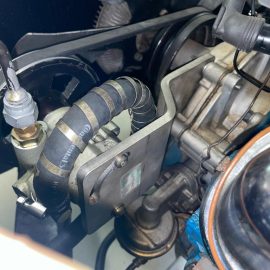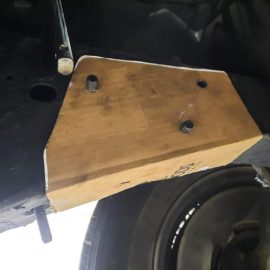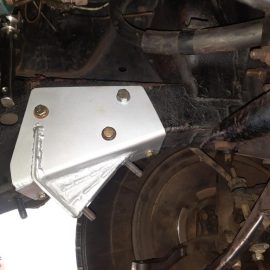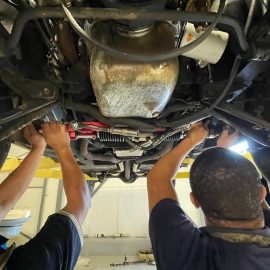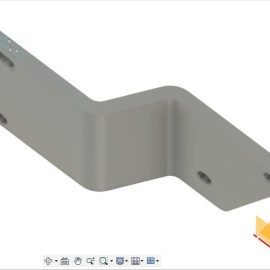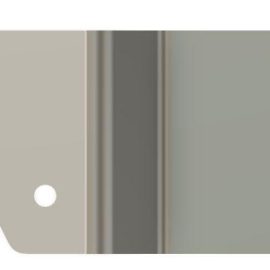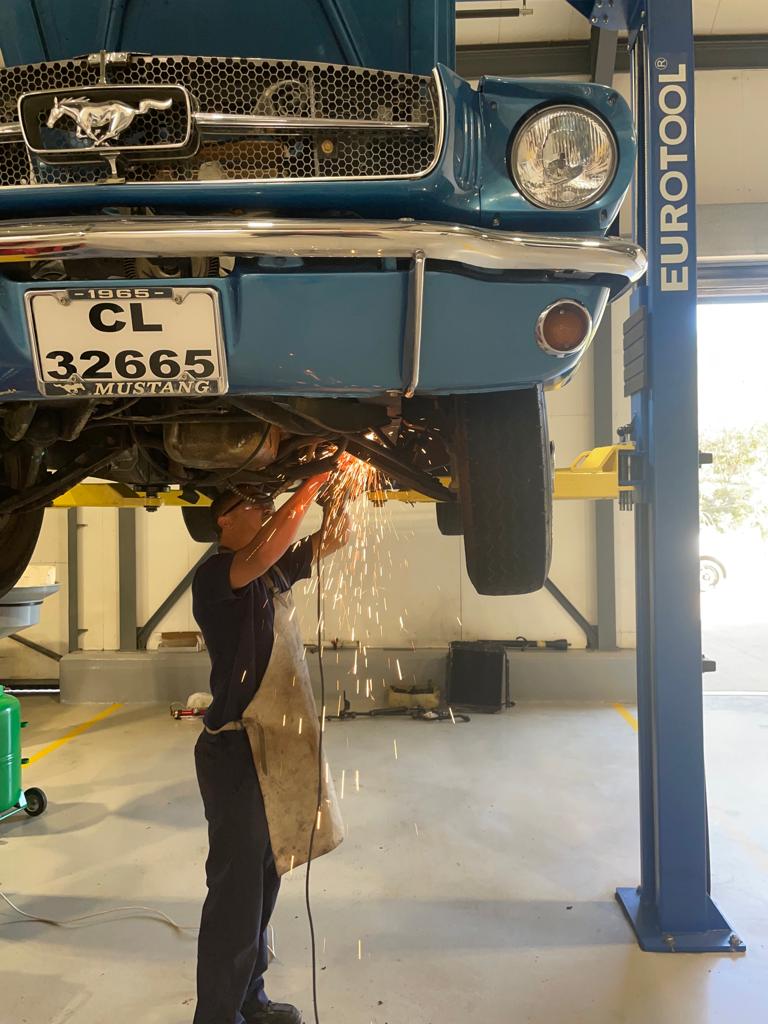
02 Oct Spanner Works: Donnie Tarentaal
A regular feature by technician JP du Plessis outlining the activities of FMM’s workshop personnel who are responsible for repairing, renovating, refurbishing and restoring the museum’s large and varied collection of vehicles. This month, Donnie helps point a Mustang in the right direction…
About a year ago, the museum’s 1968 Ford Mustang Convertible was featured for its pedal box restoration. Now it is the 1965 Mustang Convertible that has been treated to a power steering upgrade that included an uprated pump and a new rack-and-pinion.
To begin the overhaul, the original steering system was measured on the car to check the wheel alignment dimensions and the steering rack mounting location. Then the original steering rack and links were removed from the car and the new rack was placed in position to see what was required for it to fit properly to the chassis, and it was found that a new mounting had to be made. So Donnie Tarentaal started by making cardboard templates to match the mounting holes on the chassis side to facilitate making a plate that would fit the new rack. The plate was then cut and bent to fit the chassis and spacing and threaded studs were added, onto which the new rack would be fastened. A gusset plate was also added for extra strength. After a good wire brushing, he then coated the new plate with some anti-corrosive paint.
With the new rack fitted, it was time to fit the steering wheel and find a route for the new pipes. But before the pipes could be routed, the new pump and reservoir had to be installed. For the pump, a new bracket had to be engineered in line with all the other drive pulleys on the front of the engine. JP helped out to mock one up, model the bracket in CAD and have it laser-cut from some sturdy stainless steel. After a slight modification and some fresh Imperial bolts, the bracket was installed and the new belt length was determined and fitted to the new pump pulley.
The pipes were then routed and measured for the new system and were sent off to be made at a local hydraulics company. Upon return, the pipes were fitted, power steering fluid was added and bled through the system. It was then taken to a local power steering specialist to ensure all the seals were correct and that the function of the new system was as it should be.
The wheel alignment measurements from before were set to be as close to original as possible, after which it was also taken for a professional wheel alignment procedure. Donnie then drove the car to test the system and confirmed all was in good order and the system upgrade was worth the work!




